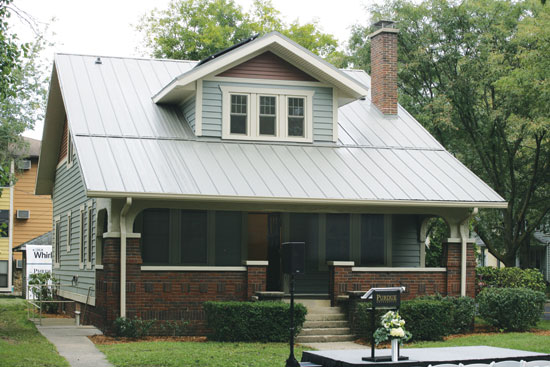Residential Retrofits Achieve Net-Zero Energy
Retrofits are generally classified in two categories. Conventional energy retrofits focus on isolated system upgrades such as lighting and appliance replacement and are typically simple and quick. Actions that include improving the building envelope, such as better insulation or fenestration, are considered deep energy retrofits and they target energy savings of at least 30 percent or more. Deep energy retrofits constitute a whole-building analysis and construction process that uses “integrative design” to achieve much larger energy savings than their conventional counterparts. Most useful on buildings with poor efficiency, deep energy retrofits combine a variety of measures from energy-efficient equipment and air sealing to moisture management in order to attain both savings and performance.
By taking an integrative approach, and thus considering how the building functions as a complete system, the design team can make certain design decisions to optimize the overall energy efficiency at the lowest possible cost. To illustrate this point with an example, consider the task of heating and cooling a building. If the design team analyzes the building envelope choices along with the choice of HVAC system, they might decide to increase the insulation levels and upgrade the fenestration in order to reduce the heating and cooling load. This would then allow for a smaller and more efficient heating, ventilation, and air conditioning (HVAC) system to be specified, potentially at an even lower cost because many times HVAC system cost is proportional to size. In the extreme case, a team might make a building so airtight and insulated that only a small emergency heating system would be needed, essentially eliminating the need for a mechanical system, depending on climate region, building orientation, and fenestration arrangement. This extreme case is very difficult in a retrofit scenario as the building orientation and fenestration arrangement is predetermined.
Sound building science practices must be the foundation of deep energy retrofits. For example, installation of insulation must be considered not just in terms of R-value but its susceptibility to moisture infiltration along with how well the wall will dry should that occur. Location of the dewpoint, detailing, flashing, and sealing of windows and other building penetrations become critical concerns, especially in very warm and humid regions such as the Southeastern United States. In some cases, energy savings on the order of 50 percent or more are possible with a deep energy retrofit,3 but a rigorous approach is required, and the relationships among energy, indoor air quality, durability, and thermal comfort must be fully understood and accommodated for throughout the retrofit process.
The ReNEWW House—A Casefor Net-Zero Energy
Purdue University researchers along with several industry partners are involved in a multi-year project to transform a 1920s Craftsman-style home in West Lafayette, Indiana, into an ultra energy-efficient, net-zero energy residence.4 The so-called ReNEWW House (Retrofitted Net-zero Energy, Water and Waste) is being retrofitted to generate as much energy as it consumes over a year, creating a net-zero energy, water, and zero waste to landfill dwelling. Later phases will focus on the water system and waste streams in the home.

Photo courtesy of Whirlpool Corporation
The ReNEWW House in Indiana is serving as a multi-year research project and sustainable living showcase for residential retrofits in older homes.
In its pre-study state, the home required about 12,000 kilowatt hours (kWh) of electricity and 50,000 kWh of thermal energy per year, costing some $3,000 in annual utility bills. The nearly 90-year-old structure earned a Home Energy Rating System (or HERS index) rating of 177. The HERS index, a standard of energy efficiency not unlike a miles-per-gallon rating for a car, was developed by the Residential Energy Service Network (RESNET) and is the nationally recognized system for evaluating a home's energy performance. Certified RESNET home energy raters conduct inspections to verify the specific features of a home that impact energy performance and use software tools to model the home energy use and generate the HERS index rating. The lower the HERS number, the more energy efficient the home. The DOE has determined that a typical resale home scores 130 on the HERS index, while a standard new home is awarded a rating of 100. For additional perspective, RESNET deems a house with a 140 HERS score “near the very top of the HERS index, a position a homeowner definitely doesn't want to be in,” and maintains that it is “performing 40 percent worse than a home adhering to the basic building code requirements. This is probably one of the major reasons for its high energy costs, less than ideal comfort level and, though one might not be directly aware of it, its negative impact on the environment.”5
At a HERS rating of 177, the ReNEWW House is 77 percent less efficient than a typical new build adhering to code. The objective of the retrofit project was not just to get that HERS rating to equal that of a new home, but to target a HERS index rating of 0, meaning that the home would produce at least as much energy than it uses on a yearly basis.









